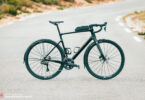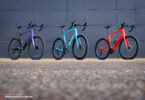The recently launched Specialized S-Works Turbo Creo SL is the newest model in the group test. Has the American E-road bike got what it takes to beat the competition?
For an overview of the test fleet head to the main article: The best E-road bike of 2019! – 13 of the most exciting models on test
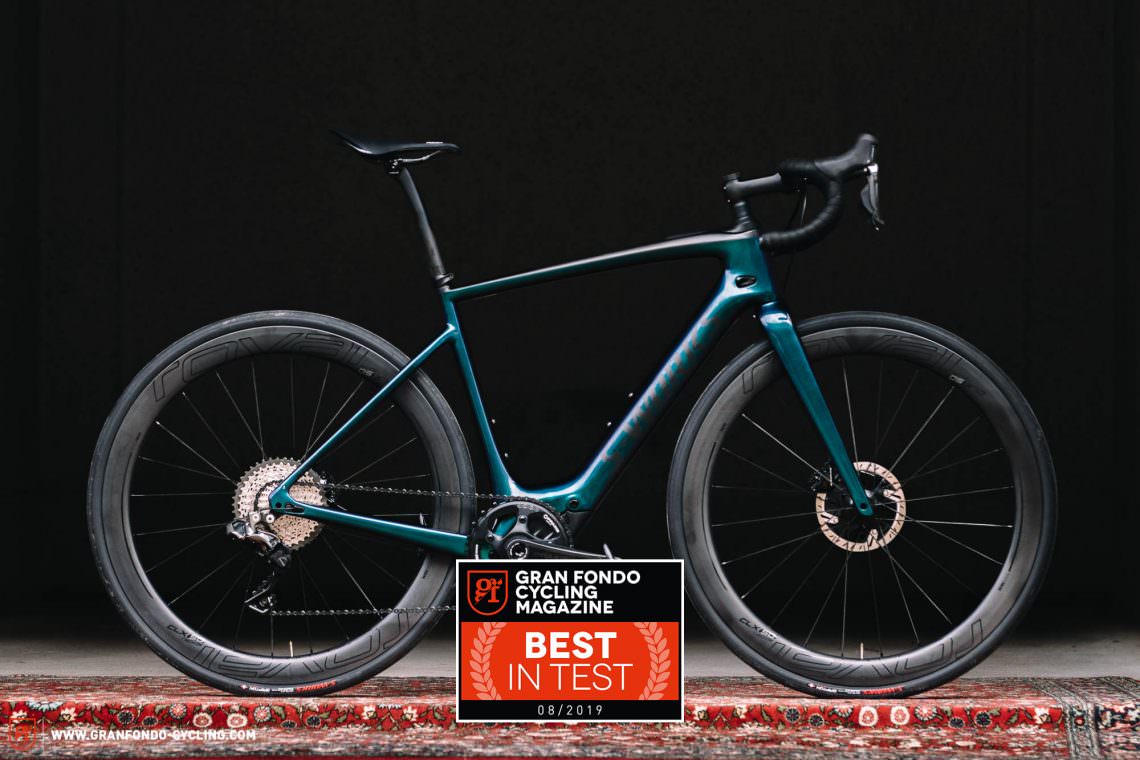
With the Specialized Turbo Creo SL, the American brand launched a whole new range just in time for the 2019 Tour de France rest days. The € 12,499 flagship S-Works model comes with a mix of Shimano DURA-ACE R9170 Di2 and XTR Di2 components and Roval CLX 50 carbon wheels. Only the limited edition Creo SL Founder’s Edition comes with an even more exclusive spec, only 250 bikes will be produced. There’s also a more affordable “Expert” and a gravel version of the Creo SL. In addition to the Future Shock 2.0 suspension system in the steerer as featured on the 2020 Specialized Roubaix, the bike also relies on a proprietary electric motor called Specialized SL 1.1. The mid motor has a Q-factor of 181 mm and draws its power from the 320 Wh battery integrated into the down tube, though you can also power it from the optional 160 Wh Range Extender. The clever thing: anyone who wants to fly with their bike can have the internal battery removed at an approved dealer and only take the Range Extender with them to lighten the load. This also makes it easier to deal with airlines who limit the capacity of the battery you can carry. Specialized have placed all their bets on 1x drivetrains for the new SL 1.1 system. The XTR Di2 derailleur from Shimano’s MTB segment is compatible with wide range 11-42 t cassettes, a choice which seems to make a lot of sense despite the larger gear steps. The workmanship, paint finish and innovation on the 12.28 kg (size L) Creo SL are consistently at the highest level.
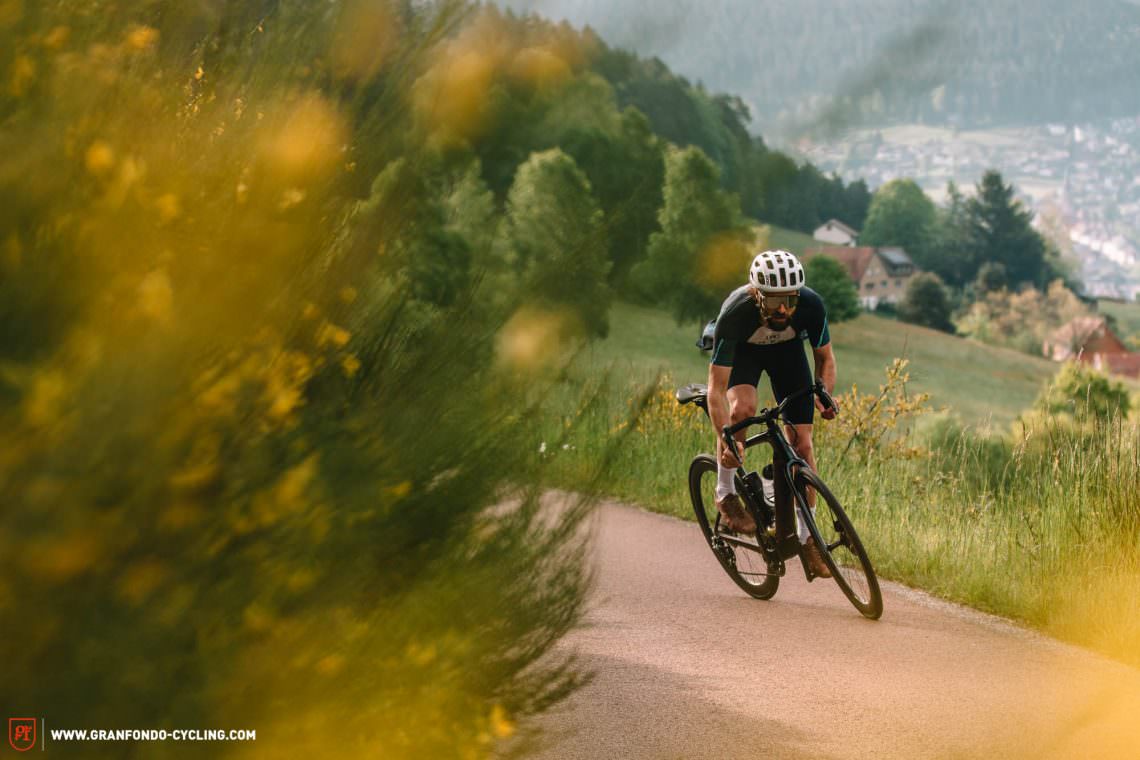
The Specialized S-Works Turbo Creo SL in detail
Motor/Battery Specialized SL 1.1 320 Wh
Drivetrain Shimano Dura-Ace Di2 R9170 mit XTR Di2 Schaltwerk 1×11
Gearing 46 T und 11–42 T
Brakes Shimano DURA-ACE R9170 160/160 mm
Stem S-Works Future Stem
Handlebar Specialized S-Works Carbon Hover Drop
Seatpost Specialized S-Works Fact Carbon
Wheels Roval CLX 50 Disc, Carbon, tubeless-ready
Tires S-Works Turbo 28C

The optional Range Extender battery provides an additional 160 Wh.
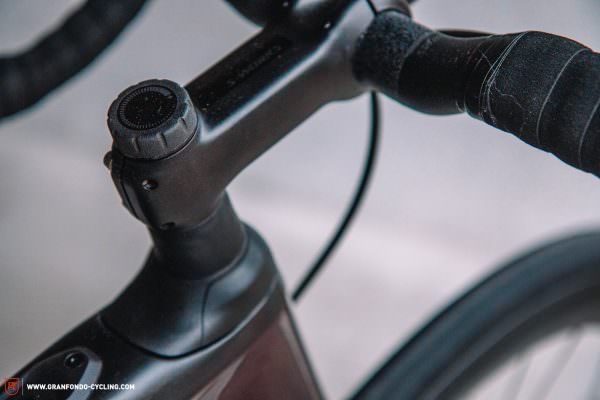
The Future Shock 2.0 system works perfectly on the Creo SL and scores for its adjustable damping and customisable comfort.

The controls in the top tube guarantee a tidy cockpit. Unfortunately, you have to take your hand off the handlebar to adjust the modes.
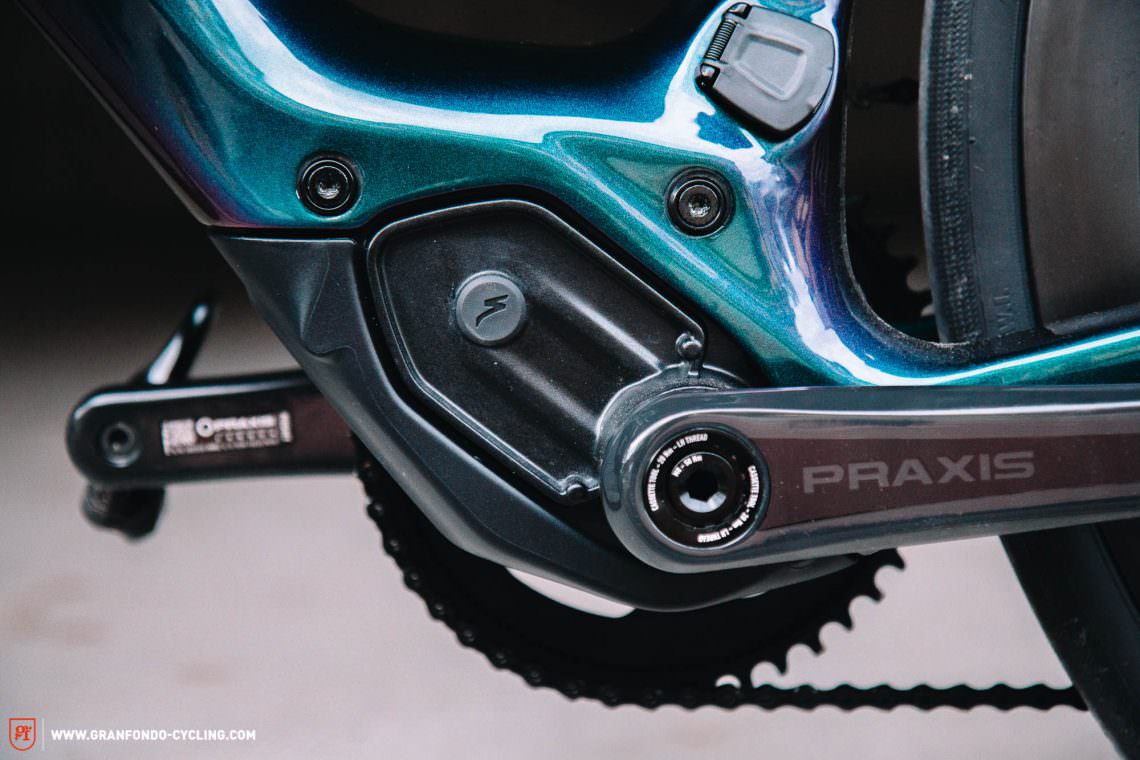
The Specialized SL 1.1 motor is the measure of all things in terms of natural ride feel
| Size | S | M | L | XL | XXL |
|---|---|---|---|---|---|
| Seat tube | 448 mm | 478 mm | 503 mm | 528 mm | 558 mm |
| Top tube | 539 mm | 548 mm | 566 mm | 581 mm | 605 mm |
| Head tube | 146 mm | 164 mm | 186 mm | 217 mm | 250 mm |
| Head angle | 72.0° | 72.5° | 73.0° | 73.0° | 73.0° |
| Seat angle | 74.0° | 74.0° | 73.5° | 73.5° | 73.0° |
| Chainstays | 426 mm | 426 mm | 427 mm | 427 mm | 428 mm |
| Wheelbase | 1,005 mm | 1,012 mm | 1,020 mm | 1,036 mm | 1,052 mm |
| Reach | 373 mm | 379 mm | 384 mm | 391 mm | 399 mm |
| Stack | 575 mm | 592 mm | 615 mm | 643 mm | 675 mm |
The Specialized S-Works Turbo Creo SL in review
The linear power curve of all three of the Creo SL’s support modes can be customised via the Mission Control Ride app. Thus, you can either opt for a more relaxed kind of riding or an active attack mode – you won’t ever feel the transition to pure muscle power when you cross the 25 km/h threshold either way. There is no other manufacturer currently able to compete with the natural ride feel of Specialized’s motor. The Creo SL, with its balanced endurance geometry, offers a perfect mix of agility and composure. At the same time, the E-road bike instils you with an enormous sense of confidence, which ensures maximum riding fun for riders of all skill levels. With regards to comfort, the damping of the adjustable Future Shock 2.0 system in the head tube of the Creo SL performs even better than on the Roubaix.
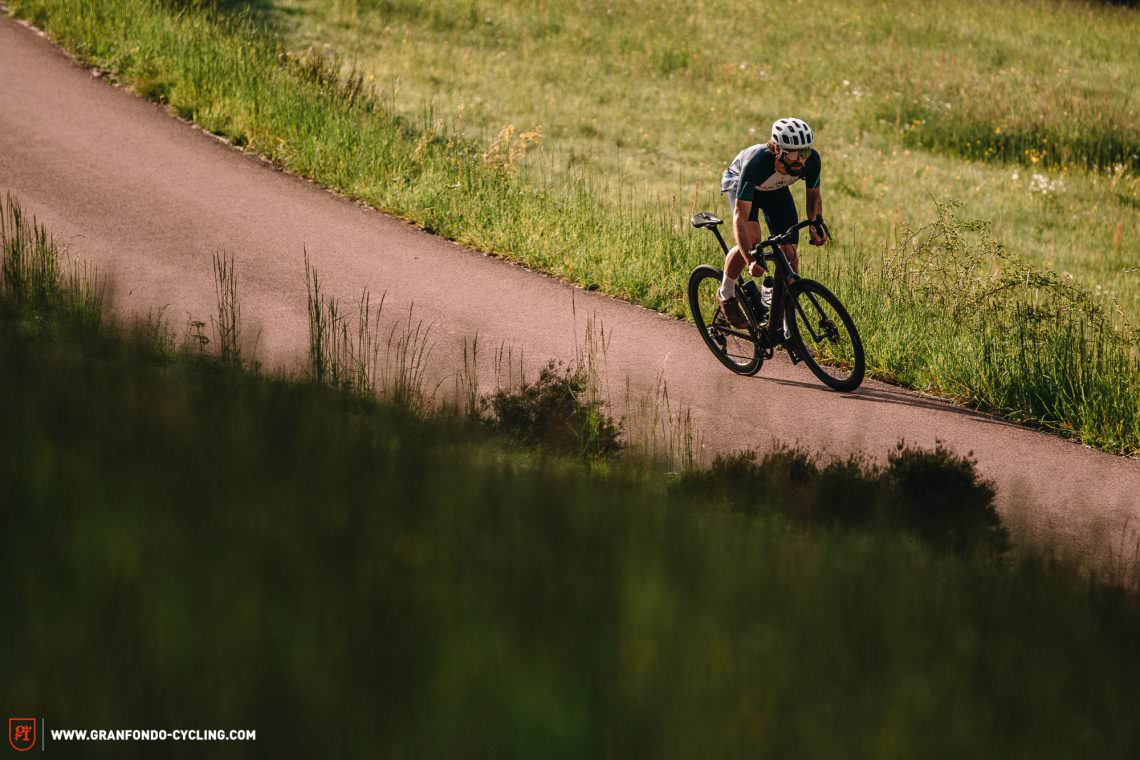
send Shimano a pallet of sake to get them to integrate motor controls into the Di2 paddles
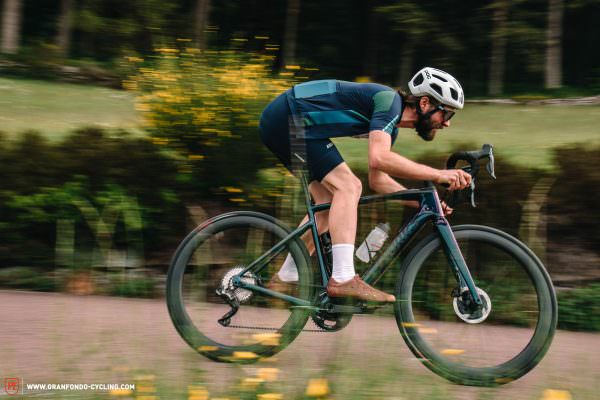
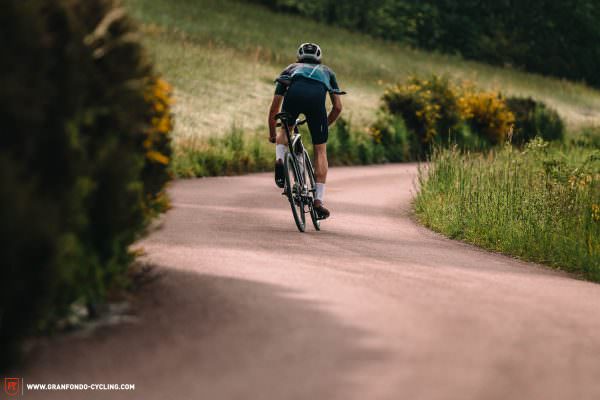
There is no ebike currently on the market that transitions more smoothly beyond the 25 km/h threshold. But apart from all the technology, this bike is just so much fun!
Combined with the vibration damping of the rear triangle and the compliance of the seat post and the damping of the 700x28C S-Works Turbo tires, the Specialized offers a balanced, high level of comfort without feeling vague. Since the Turbo Creo SL Expert EVO gravel bike uses the same frameset, the S-Works Turbo also has enough clearance for up to 700x42C or 650Bx50 tires. Specialized’s proprietary Turbo Connect display can optionally be left at home or replaced by your own GPS computer.
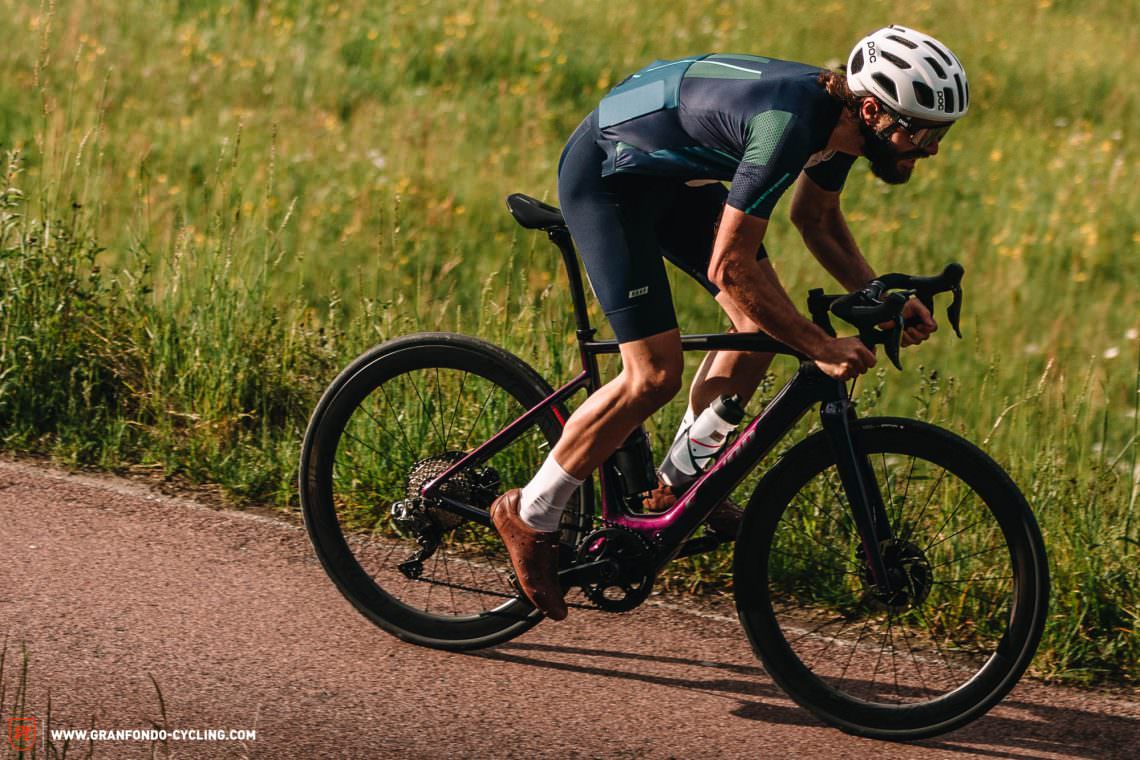
Conclusion
With the most natural feeling electric motor in the test field, the perfectly balanced handling and the high level of comfort, the Creo SL secures our much sought-after Best in Test of our big E-road bike group test. Ultimately, the modulation of the SL 1.1 motor, the intuitive handling and the natural ride feel outweigh the drawbacks of the comparably wide Q-factor and the fact that you have to take your hand off the handlebar to change the support mode. Maillot Jaune and a well-deserved overall victory!
Tops
- most natural feeling motor
- perfectly balanced handling
- high level of comfort and confidence
Flops
- 181 mm Q-factor
- motor controls in the top tube
Riding Characteristics
4Agility
- cumbersome
- playful
Stability
- nervous
- confident
Handling
- demanding
- balanced
Fun factor
- boring
- lively
Motor feeling
- digital
- natural
Motor power
- weak
- strong
Value for money
- terrible
- very good
For more info head to: specialized.com
For an overview of the test fleet head to the main article: The best E-road bike of 2019! – 13 of the most exciting models on test
For an overview of the test fleet head to the main article: The best E-road bike of 2019! – 13 of the most exciting models on test
All bikes in test: Bianchi Aria e-Road | BMC Alpenchallenge AMP ROAD ONE | Cannondale Synapse Neo SE | CENTURION Overdrive Carbon Road Z4000 | Coboc TEN Torino | FOCUS Paralane² 9.9 | LOOK E-765 Optimum Disc | Moustache Dimanche 28.7 | ORBEA GAIN M10 | Pinarello Nytro | Thömus Sliker E1 | Wilier Triestina Cento1 Hybrid Custom
This article is from GRAN FONDO issue #012
GRAN FONDO Cycling Magazine is published in a digital app format in both English and German. Download the app for iOS or Android to read all articles on your tablet or smartphone. 100% free!


No, it’s not about perfect race tracks, it’s about efficiency. Fast, fleet-footed and efficient – those who want to speed along high-speed passages need a defined and spritely bike that accelerates with ease and efficiency. Nevertheless, reliable components are important too. We interpret “Smooth tarmac” bikes as follows: Hard efforts at high speeds with a maximum efficient bike on a consistently well-paved road. Effort-joy ratio: 80:30 (not everything has to be 100%!)↩
… also known as bike riding. Broken-up roads in the hinterland, deadlocked gravel roads, loose surfaces – sometimes muddy, sometimes bone-dry. For this, it takes bikes with super all-round, handling and wearing qualities uphill and downhill. Effort-joy ratio: 50:50↩
If you want to use your bike almost every day, you usually do not need an extremely tuned racing machine. Solid components, which are able to cope with the rigours of continuous usage in any kind of weather, are part of the basic equipment. At the same time, the bike should have practicable details: integrated fenders/assembly options, luggage racks/attachment points and a light system or at least the option of installing bike lights. The position on the bike should be rather relaxed, the overall comfort high, so that the Afterwork Ride becomes a cure and not a curse. Effort-joy ratio: 30:70↩
You can find more info about our rating system in this article: Click here! ↩
Did you enjoy this article? If so, we would be stoked if you decide to support us with a monthly contribution. By becoming a supporter of GRAN FONDO, you will help secure a sustainable future for high-quality cycling journalism. Click here to learn more.
Words: Photos: Valentin Rühl, Benjamin Topf, Robin Schmitt




